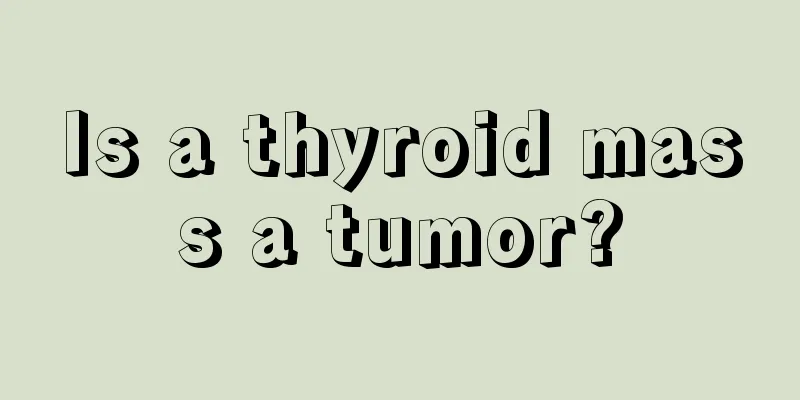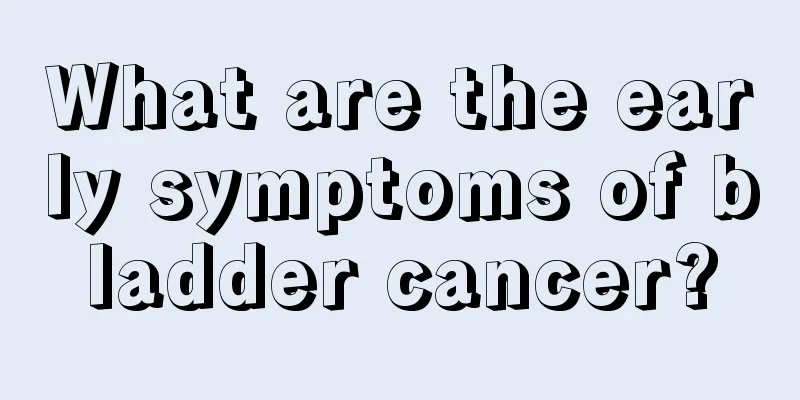Is a thyroid mass a tumor?

|
The thyroid gland in the human body plays an important role. Thyroid nodules are a phenomenon that many people have. They refer to solid or fluid-filled lumps that form within the thyroid gland, usually appearing at the base of the neck. Since thyroid nodules are usually non-cancerous, or benign, patients do not need to worry or be afraid. However, if they experience difficulty breathing or swallowing, they need to seek medical attention promptly because thyroid nodules may become cancerous. 1. What is thyroid nodule? Thyroid nodules refer to the appearance of one or more lumps of abnormal tissue structure in the thyroid gland due to various reasons such as radiation exposure. Thyroid nodules are extremely common clinically, especially in women. Most thyroid nodules are benign, and malignant nodules only account for about 0.1% of thyroid nodules. Thyroid nodules include benign nodules, toxic nodular goiter, and simple nodular goiter. Strange lymphocytic thyroiditis, subacute thyroiditis and other diseases. Thyroid nodules are mostly benign and painful. 2. Clinical manifestations The main symptoms are thyroid nodules or lumps, and thyroid enlargement. A small number of people develop rapidly growing local thyroid lumps accompanied by pain. A small number of patients may have palpitations, sweating, hand tremors, and weight loss as the main clinical manifestations due to combined hyperthyroidism; or may have obvious symptoms of fear of cold, fatigue, and edema due to combined hypothyroidism; when combined with acute or subacute thyroiditis, obvious pain and tenderness may occur in the thyroid and surrounding areas; when the nodules compress the surrounding tissues, corresponding clinical manifestations such as hoarseness, breath holding, and difficulty swallowing may occur. 3. Causes 1. Inflammatory nodules: acute suppurative thyroiditis, subacute thyroiditis, chronic lymphocytic thyroiditis, thyroid tuberculosis or syphilis. 2. Cystic nodules: cystic degeneration of thyroid nodules, cystic degeneration of thyroid cancer, hemorrhage in adenoma and carcinoma, inflammatory abscesses, congenital thyrohyoid cysts and cysts caused by remnants of the fourth branchial cleft. 3. Hyperplastic nodules: thyroid nodule disease, amyloid degeneration, excessive or insufficient iodine intake, consumption of goitrogenic substances, taking goitrogenic drugs or thyroid hormone synthesis defect, etc. 4. Tumor nodules: benign thyroid adenoma, papillary thyroid carcinoma, follicular cell carcinoma, Hurthle cell carcinoma, medullary thyroid carcinoma, undifferentiated carcinoma, lymphadenopathy and other thyroid follicular cell and non-follicular cell malignancies and metastatic cancers. 4. Disease care 1. Avoid spicy food: chili peppers, raw onions, and raw garlic; 2. Taboo seafood: kelp, shrimp, hairtail; 3. Avoid strong tea, coffee, tobacco and alcohol; 4. Keep calm and avoid fatigue. 5. Get enough sleep and keep a good mood; 6. Relax when working or studying, and don’t put too much pressure or burden on yourself; 7. Patients should reduce their activities as much as possible and mainly rest in bed. Reduce your activity level. |
<<: What are the symptoms of a misaligned hook tumor
Recommend
How to distinguish the authenticity of vermicelli_How to distinguish the authenticity of sweet potato vermicelli
People who often eat vermicelli know that real ve...
How to make a round face longer?
In people's aesthetic concepts, an oval face ...
What to eat to treat nasopharyngeal cancer? How to adjust your diet?
What is the treatment for nasopharyngeal cancer? ...
Two reasons for bleeding during laparoscopic gastric cancer surgery
In recent years, with the continuous development ...
Does it hurt when removing the drainage tube for breast cancer?
Does it hurt when the breast cancer drainage tube...
Can I eat seafood after getting rabies vaccine
Rabies vaccine is mainly used to prevent the body...
Tear groove filling effect
The tear trough is the area next to the eye. If i...
Prostate hyperplasia will not develop into prostate cancer
65-year-old Mr. Liu was diagnosed with prostate h...
Here’s what you need to know about taking Hemp Seed Capsules!
Hemp Seed Capsule is a commonly used medicine in ...
What foods are good for nasopharyngeal cancer?
What foods are good for nasopharyngeal cancer? If...
What can't you eat if you have ovarian tumor
What can't you eat if you have ovarian tumor?...
What are the ways to keep warm in winter
As winter comes and the weather gradually becomes...
What are the methods to remove dental plaque
We all hope to show beautiful white teeth when we...
How long does it usually take to take calcium tablets
We all know that calcium supplementation is parti...
Which pancreatic cancer patients are suitable for HIFU treatment
Although HIFU treatment in pancreatic cancer trea...









